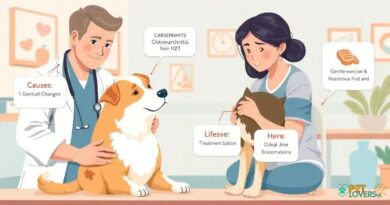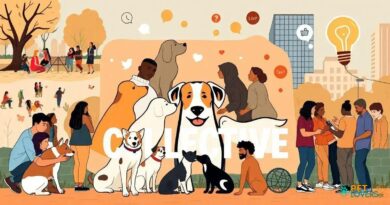What is affectionate dog behaviors
Understanding Affectionate Dog Behaviors
Affectionate dog behaviors are essential for building a strong bond between dogs and their owners. These behaviors manifest in various ways, showcasing a dog’s emotional connection and trust towards humans. Recognizing these signs can enhance the relationship and improve the overall well-being of both the dog and the owner.
Signs of Affection in Dogs
Dogs express affection through a range of behaviors, including wagging their tails, licking, and cuddling. A wagging tail often indicates happiness and excitement, while licking can be a sign of affection or a way for dogs to communicate their love. Cuddling is another clear indicator that a dog feels safe and comfortable in the presence of its owner.
The Importance of Eye Contact
Eye contact plays a significant role in affectionate dog behaviors. When a dog looks into its owner’s eyes, it releases oxytocin, the “love hormone,” which strengthens the bond between them. This mutual gaze fosters trust and affection, making it an essential aspect of the human-dog relationship.
Playfulness as an Affectionate Behavior
Playfulness is a vital expression of affection in dogs. Engaging in playtime not only stimulates a dog’s mind but also reinforces the bond between the dog and its owner. Whether it’s fetching a ball or tugging on a rope, playful interactions are a clear sign that a dog enjoys spending time with its human.
Body Language and Affection
Understanding a dog’s body language is crucial in recognizing affectionate behaviors. A relaxed body posture, soft ears, and a wagging tail indicate a happy and affectionate dog. Conversely, a tense body or tucked tail may suggest discomfort or fear. Being attuned to these signals helps owners respond appropriately to their dog’s needs.
Vocalizations as Expressions of Affection
Dogs communicate affection not only through body language but also through vocalizations. Soft whines, barks, or even howls can indicate a desire for attention or companionship. Recognizing these sounds and responding positively can enhance the emotional connection between the dog and its owner.
The Role of Routine in Affectionate Behaviors
Establishing a routine can significantly impact a dog’s affectionate behaviors. Regular feeding, walks, and playtime create a sense of security for dogs, leading to more affectionate interactions. Dogs thrive on consistency, and knowing what to expect can help them feel more relaxed and loving towards their owners.
Training and Affectionate Behaviors
Positive reinforcement training techniques can encourage affectionate behaviors in dogs. Rewarding a dog with treats or praise for displaying affectionate actions reinforces these behaviors. This not only strengthens the bond between the dog and its owner but also promotes a well-behaved and emotionally healthy pet.
Socialization and Affection
Socialization plays a crucial role in developing affectionate dog behaviors. Exposing dogs to various environments, people, and other animals helps them learn how to express affection appropriately. Well-socialized dogs are more likely to exhibit loving behaviors towards their owners and others, enhancing their overall temperament.
Understanding Individual Differences
It’s essential to recognize that each dog has its unique personality and way of expressing affection. Some dogs may be more reserved, while others are openly affectionate. Understanding these individual differences allows owners to appreciate their dog’s unique ways of showing love and strengthens their bond.



